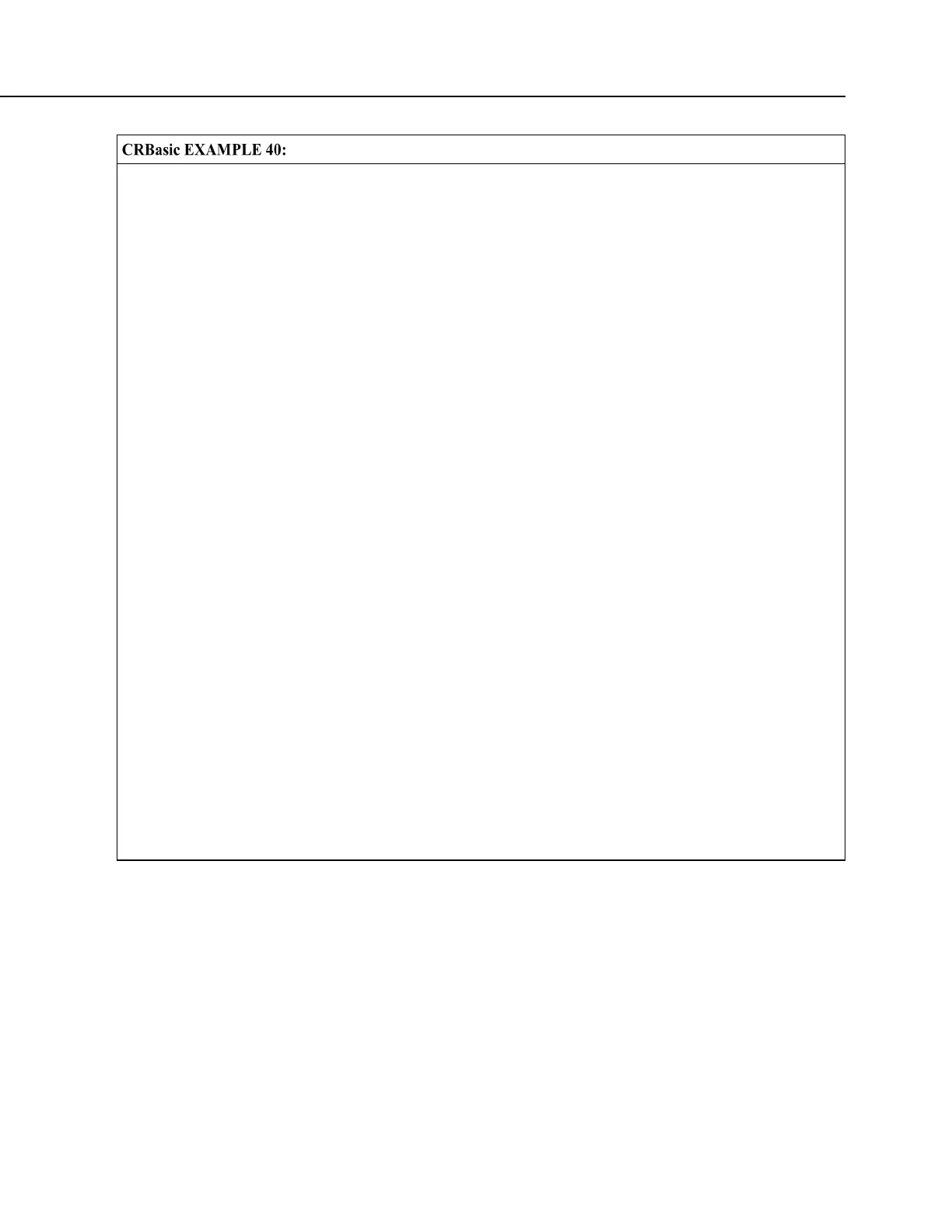Section 7. Installation
NSEC —Convert Timestamp to Universal Time
'This program example demonstrates the use of NSEC data type to convert a data time stamp
'to universal time.
'
'Application: the CR800 needs to display Universal Time (UT) in human readable
'string forms. The CR800 can calculate UT by adding the appropriate offset to a
'standard time stamp. Adding offsets requires the time stamp be converted to numeric
'form, the offset applied, then the new time be converted back to string forms.
'These are accomplished by:
' 1) reading Public.TimeStamp into a LONG numeric variable.
' 2) store it into a type NSEC datum in final-data memory.
' 3) sample it back into string form using the TableName.FieldName notation.
'Declarations
Public UTTime(3) As String * 30
Dim TimeLong As Long
Const UTC_Offset = -7 * 3600 '-7 hours offset (as seconds)
DataTable(TimeTable,true,1)
Sample(1,TimeLong,Nsec)
EndTable
'Program
BeginProg
Scan(1,Sec,0,0)
'1) Read Public.TimeStamp into a LONG numeric variable. Note that TimeStamp is a
' system variable, so it is not declared.
TimeLong = Public.TimeStamp(1,1) + UTC_Offset
'2) Store it into a type NSEC datum in final-data memory.
CallTable(TimeTable)
'3) sample time to three string forms using the TableName.FieldName notation.
'Form 1: "mm/dd/yyyy hr:mm:ss
UTTime(1) = TimeTable.TimeLong(1,1)
'Form 2: "dd/mm/yyyy hr:mm:ss
UTTime(2) = TimeTable.TimeLong(3,1)
'Form 3: "ccyy-mm-dd hr:mm:ss (ISO 8601 Int'l Date)
UTTime(3) = TimeTable.TimeLong(4,1)
NextScan
7.7.9 Data Output: Wind Vector
The WindVector() instruction processes wind-speed and direction measurements
to calculate mean speed, mean vector magnitude, and mean vector direction over a
data-storage interval. Measurements from polar (wind speed and direction) or
orthogonal (fixed East and North propellers) sensors are supported. Vector
direction and standard deviation of vector direction can be calculated weighted or
unweighted for wind speed.

